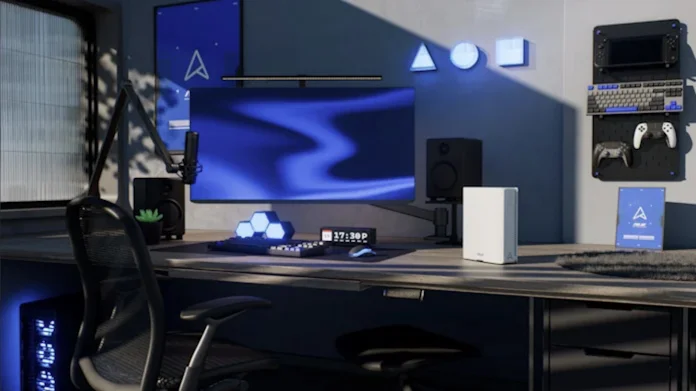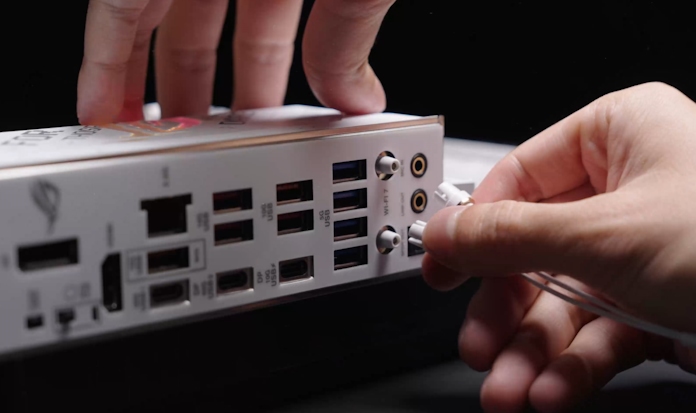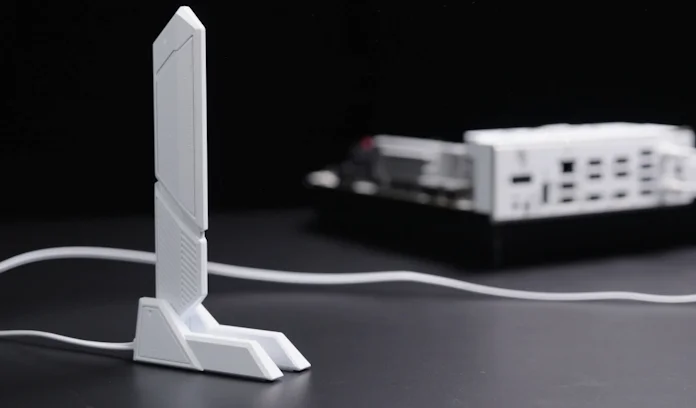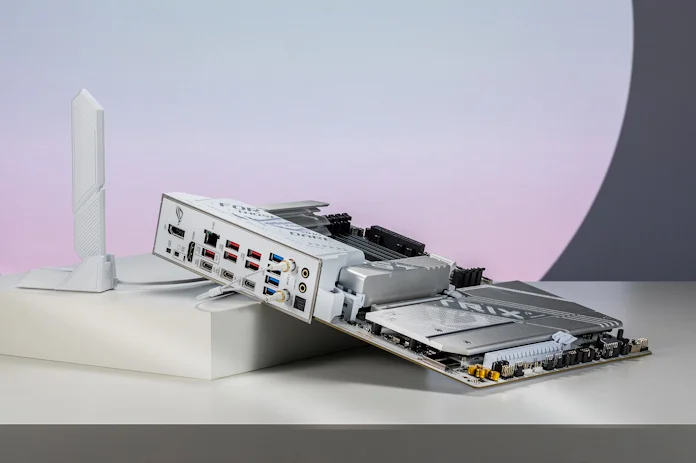WiFi 7 has entered the chat. Not only is it faster, but it’s better equipped to manage a crowded network than the WiFi 5 routers that many people still have in their homes. WiFi 7 gives gamers, remote workers, and tech enthusiasts boosted throughput and reduced latency. Considering all the advantages that the new standard has on tap, you might be making the upgrade to a WiFi 7 router or mesh WiFi system this year. To take full advantage of your new networking hardware with your desktop PC, you’ll need a WiFi 7 motherboard — and you’ll find plenty of options in our X870E and X870 motherboard lineup.
Upgrades across the board
WiFi 7 brings a wealth of advantages over last-gen tech. It starts with raw speed. While WiFi 6 focused on congestion-busting tech designed for crowded networks, WiFi 7 kicks into high gear with new features that deliver faster wireless speeds than ever, all while retaining or refining the advantages of WiFi 6.*

WiFi 7 boosts your speed with a variety of new technologies. WiFi 6E opened up access to the 6GHz band, but WiFi 7 lets you do more with it via ultra-wide 320MHz channels.** These wider channels with their higher capacity allow WiFi 7 routers to deliver higher performance and larger capacity. The 320MHz channel bandwidth on the 6GHz band offers data rates twice as fast as you could get through WiFi 6E. On top of that, 4096 Quadrature Amplitude Modulation (4K QAM) allows for greater amounts of data to be more densely embedded in each signal.
In the past, wider channels were impractical due to spectrum restrictions that may prohibit the use of part of the band. With Multi-RU and Puncturing, WiFi 7 motherboards will be able to take full advantage of the remaining part of the channels that is not being used or interrupted. This way, the WiFi bandwidth can be used efficiently to make data transmission quicker and more reliable.
Multi-link operation (MLO) allows devices simultaneously transmit and/or receive across different bands and channels, with separation of data and control planes. The parallel links enable faster speeds by aggregating bandwidth, with more reliable WiFi connections on multiple concurrently used bands.
Make a connection with the ASUS WiFi Q-Antenna
To help you get the most out of your WiFi 7 connection, we include the ASUS WiFi Q-Antenna with your X870E or X870 motherboard. With circuit optimizations to the PCB and enhanced inner pin connectors, it delivers exceptional signal throughput for the 5GHz and 6GHz bands. Its easy one-step design means that you don’t have to do anything more than plug it in to have a great experience — and even the act of plugging it in is easier than with last-gen designs thanks to the EZ-Plug that replaces the fiddly threaded mechanisms of the past.

Since the ASUS WiFi Q-Antenna is directional, we also give you convenient tools in the Armoury Crate app to improve signal quality and range by adjusting its position. Direction Finder detects signal strength and identifies the ideal positioning for your antenna in just a few steps, while Fast Check gives you a quick way to check signal strength and ensure that you’re getting the best connection.

We’re also introducing a new Armoury Crate feature to help you get the best connection for your PC. With Traffic Monitor, you’ll be able to track current utilization of WiFi channels across the 2.4GHz, 5GHz, and 6GHz bands. If you’re using an ASUS router, you can then use Channel Switch to hop over to a less congested channel for improved network performance.
Select your WiFi 7 power level
With the sole exception of the ASUS Prime X870-P, a motherboard without an onboard wireless module, every ASUS X870E and X870 board offers WiFi 7 support. If you’re looking for the absolute best wireless performance, we’ll steer you to the top-of-the-line ROG Crosshair X870E Hero. Offering link speeds up to 6.5Gbps with MLO, 4K QAM, and access to 320MHz channels, this WiFi 7 motherboard gives you a premium wireless networking experience. You’ll find the same high-end WiFi module on the ProArt X870E-Creator WiFi and most ROG Strix X870E/X870 motherboards, as well.
If your wireless networking needs are more modest, you’ll be well-served by the ROG Strix X870-A Gaming WiFi, TUF Gaming X870-Plus WiFi, or ASUS Prime X870-P WiFi. Featuring many of the latest WiFi 7 advances, if not the top-end link speeds, these motherboards give you more networking options as you’re selecting a platform for your AMD Ryzen 9000 Series CPU — and they still offer a very noticeable speed increase over last-gen options.
| Series | Model | WiFi Module | Modulation | Bandwidth | Link Speed with MLO | WiFi Q-Antenna |
|---|---|---|---|---|---|---|
| ROG Crosshair | X870E Hero | MT7927 | 4096 QAM | 320MHz | 6.5Gbps | Yes |
| ROG Strix | X870E-E WiFi | MT7927 | 4096 QAM | 320MHz | 6.5Gbps | Yes |
| X870-F WiFi | MT7927 | 4096 QAM | 320MHz | 6.5Gbps | Yes | |
| X870-A WiFi | MT7925 | 4096 QAM | 160MHz | 2.9Gbps | Yes | |
| X870-I WiFi | MT7927 | 4096 QAM | 320MHz | 6.5Gbps | Yes | |
| ProArt | X870E-Creator WiFi | MT7927 | 4096 QAM | 320MHz | 6.5Gbps | Yes |
| TUF Gaming | X870-Plus WiFi | MT7925 | 4096 QAM | 160MHz | 2.9Gbps | Yes |
| Prime | X870-P WiFi | MT7925 | 4096 QAM | 160MHz | 2.9Gbps | Yes |
| X870-P | None | N/A | N/A | N/A | No |
Your WiFi 7 motherboard awaits
With a WiFi 7 router and a WiFI 7 motherboard, you’ll be to equip your next desktop PC with all the next-gen advantages that the new networking tech brings to the table. Our X870E and X870 motherboard lineup gives you even more options for a PC that’s built from the ground up for next-gen wireless networking. Yet WiFi 7 support is just one of the many exciting new features that we’re bringing to the table with these motherboards. Click here to learn all about our latest X870E and X870 motherboards.

*WiFi 7 features requires WiFi routers and client devices with WiFi 7-supported operating systems to support the corresponding features.
**Support for 320MHz channels in the 6 GHz band may be unavailable in some regions / countries due to regulatory restrictions. Not all WiFi 7 client modules support 320MHz channels.

